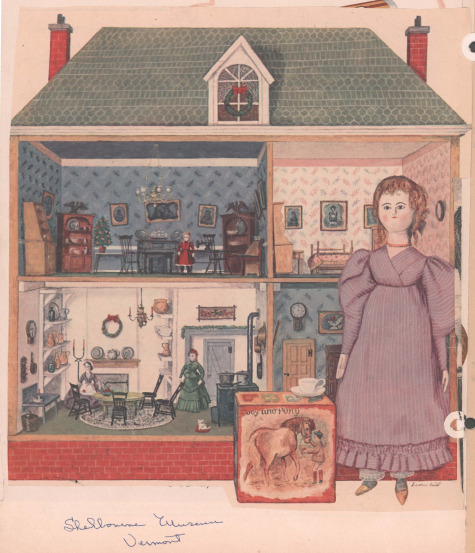Miniature Hobbies: The History of Dollhouses
The hobby of collecting miniatures and creating intricate dollhouses has fascinated people for centuries. Contrary to modern belief that dollhouses have always been considered toys for children, as early as the sixteenth century, aristocratic families collected dollhouses as a means of displaying their wealth; the dollhouse rooms provided people with a look into the social customs and values within the ‘home’ in a particular era, showcasing what kind of worldly possessions and furnishings people had on a miniature level. They were (and still are) testaments to an artistic craft that stressed the importance of creating materials on a small scale–requiring a delicate precision and detail of the items that were displayed for all to see.
It wasn’t until the Victorian era in which dollhouse furniture and parts were mass produced that this hobby was more widely accessible to everyone, not just the wealthy. The middle and working classes started to collect dollhouses as well, and this hobby eventually transformed from one for adults to one for children, as the Victorian era saw a shift in familial values that emphasized the importance of playtime for children before entering adulthood.
According to dollhouse historian Nicola Lisle, author of Life in Miniature: A History of Dollhouses,
“dolls houses are more than just small houses with collections of dolls and miniature objects. They are multidimensional works of art with stories to tell. As with any works of art, we can simply gaze in awe at their exquisiteness and admire the craftsmanship that brought them to life, or we can delve a little deeper to see what they have to say to us” (Lisle, Life in Miniature: A History of Dollhouses, introduction).
In the case of our own dollhouse collection, currently housed on the first floor of the Eugene S. Farley Library, we invite you to explore the history of the talented craftsmanship of Mrs. Mignonette Fisher, a Kington and Dallas, PA native who created ten illustrious dollhouse rooms from different historical eras.
Let’s take a look at who the creator of this dollhouse was: Mrs. Mignonette Fisher.

This print of an illustration (originally drawn by Homer Hill, 1917-1968) was found in Mrs Fisher’s Dollhouse Scrapbook, Part 2, which consists of a collection of images and articles concerning the Dollhouse and architectural movements.

![<a href="/omeka/items/browse?advanced%5B0%5D%5Belement_id%5D=50&advanced%5B0%5D%5Btype%5D=is+exactly&advanced%5B0%5D%5Bterms%5D=A+Color+Lithograph+of+Girls+playing+with+a+dolls+house.+Illustration+for+Warne%27s+Picture+Puzzle+Toy+Book%2C+Printed+by+Kronheim%2C+%5Bca.+1880%5D">A Color Lithograph of Girls playing with a dolls house. Illustration for Warne's Picture Puzzle Toy Book, Printed by Kronheim, [ca. 1880]</a> <a href="/omeka/items/browse?advanced%5B0%5D%5Belement_id%5D=50&advanced%5B0%5D%5Btype%5D=is+exactly&advanced%5B0%5D%5Bterms%5D=A+Color+Lithograph+of+Girls+playing+with+a+dolls+house.+Illustration+for+Warne%27s+Picture+Puzzle+Toy+Book%2C+Printed+by+Kronheim%2C+%5Bca.+1880%5D">A Color Lithograph of Girls playing with a dolls house. Illustration for Warne's Picture Puzzle Toy Book, Printed by Kronheim, [ca. 1880]</a>](https://omeka.wilkes.edu/omeka/files/fullsize/e100711187531c2e850105b362e00161.jpg)
